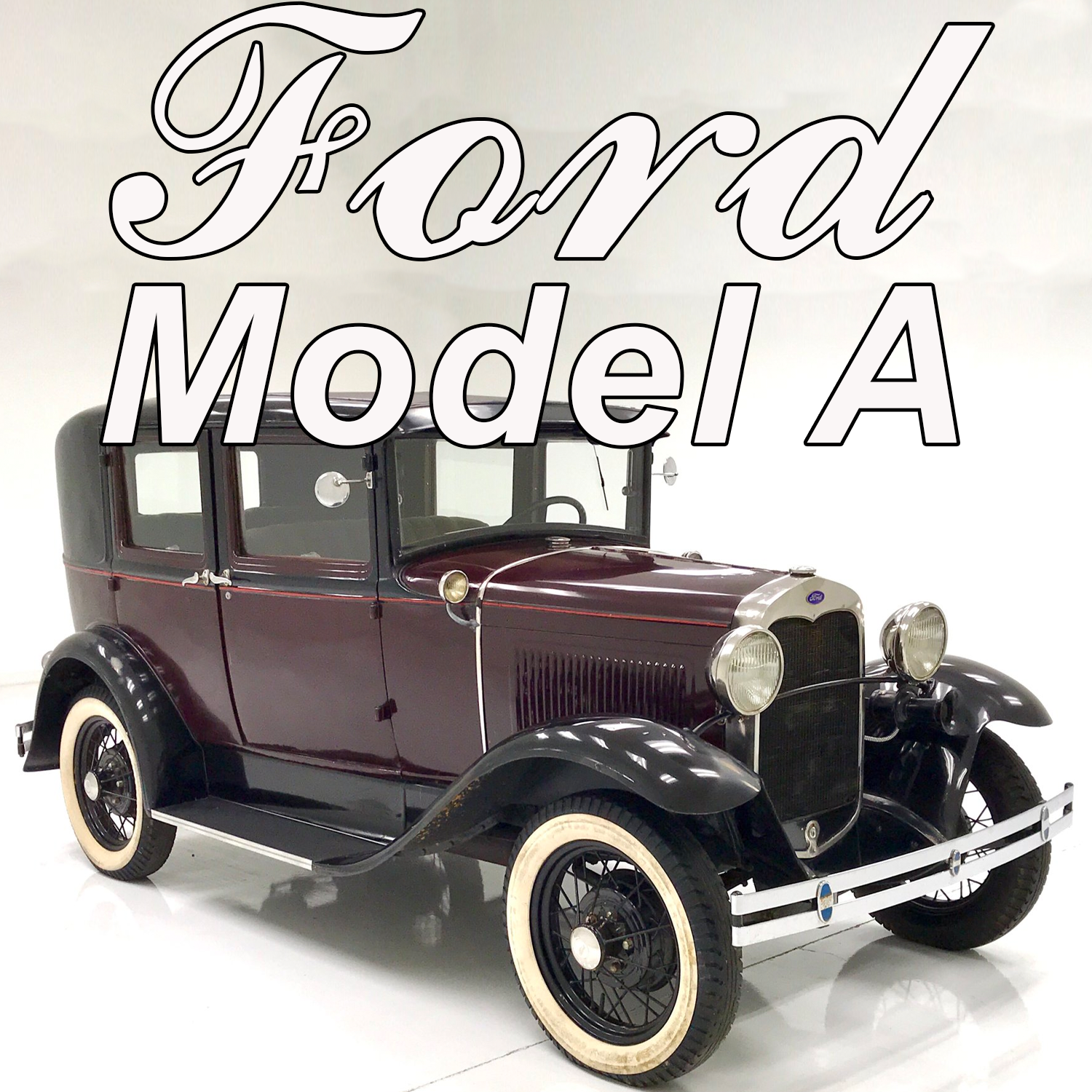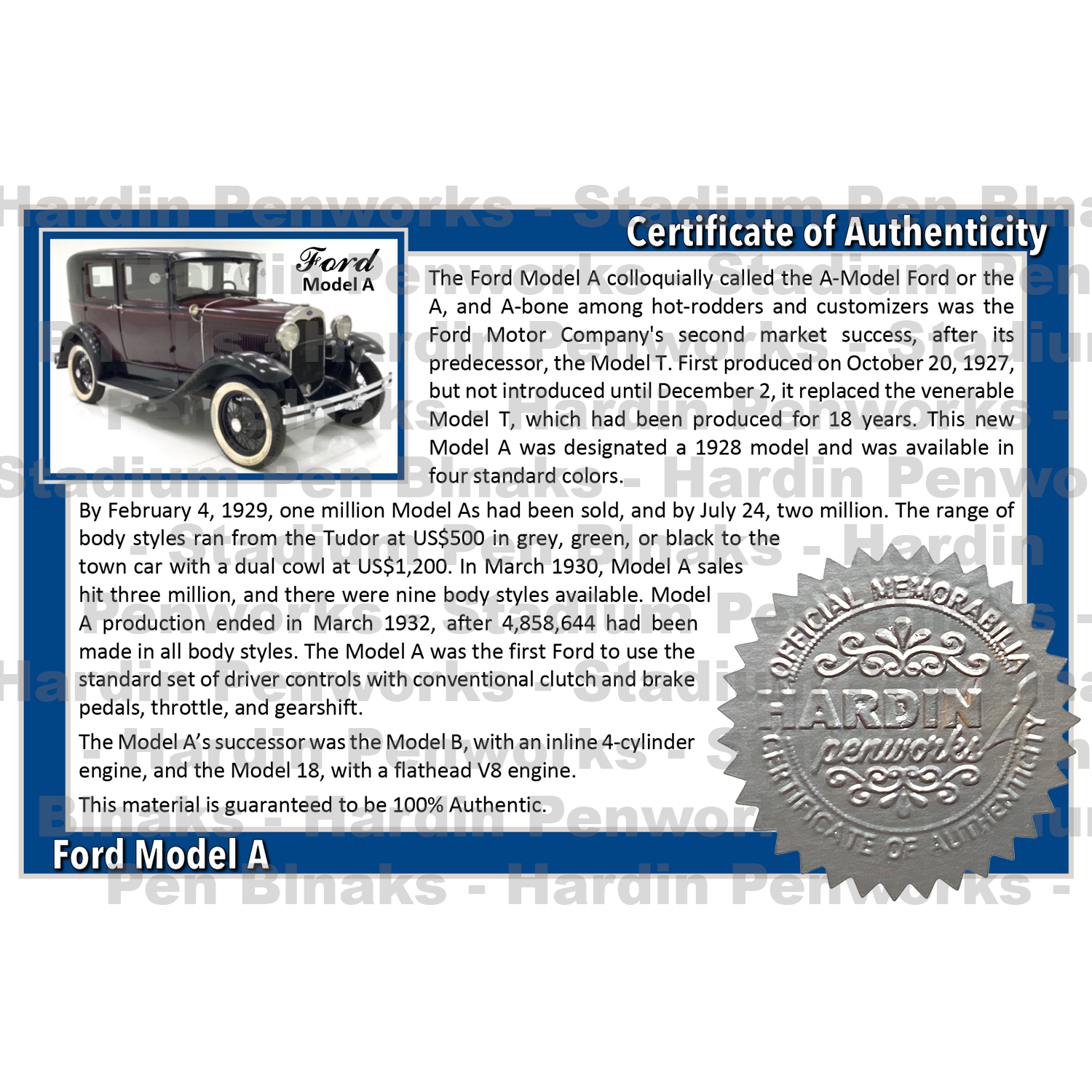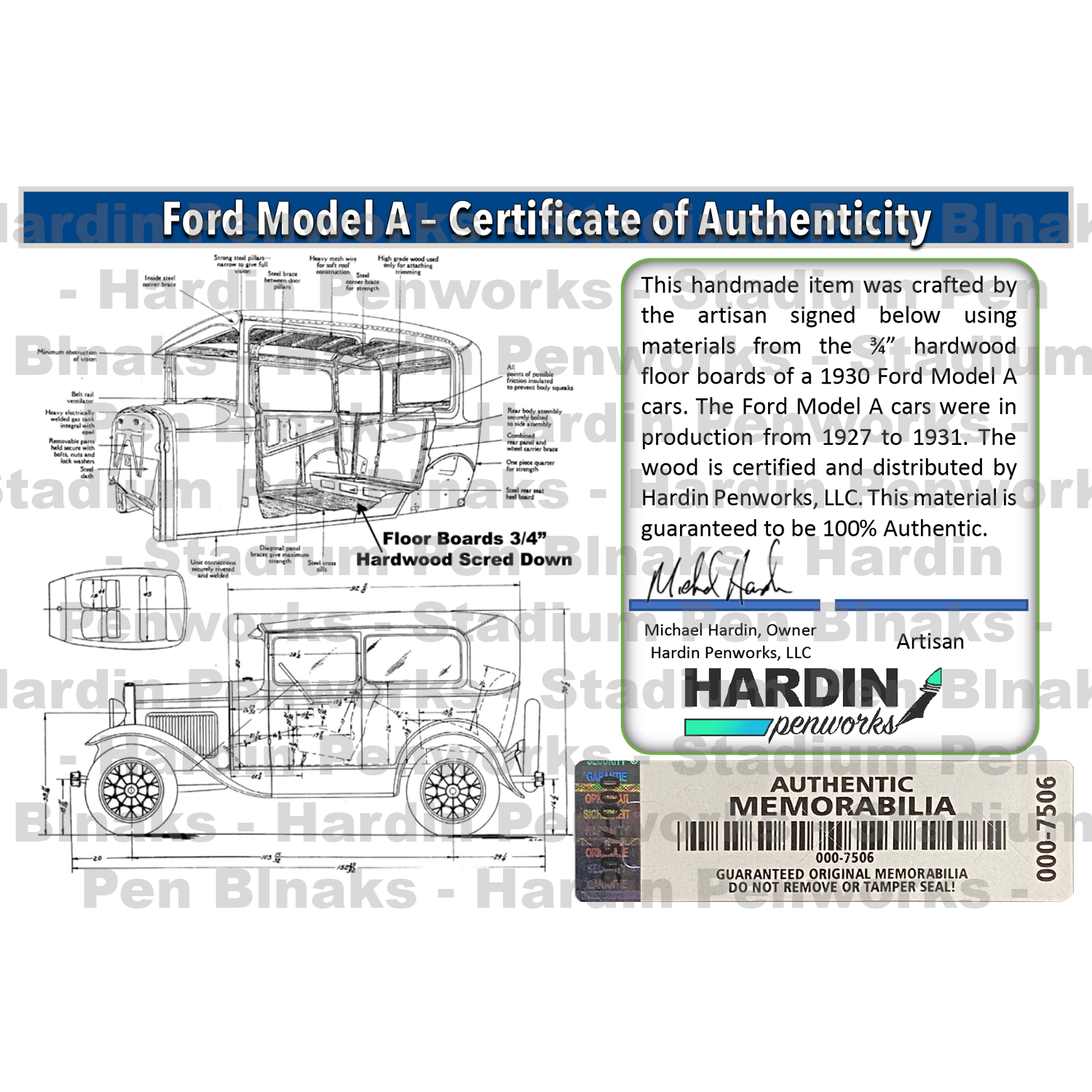Ford Model A (1930)
Ford Model A (1930)
3.5 / 5.0
(2) 2 total reviews
Prodcut Base price with no add-on options
In stock
Product Price with any add-on options selected
Couldn't load pickup availability
Blanks are salvaged from an original wood floor boards of a 1930 Ford Model A car.
Blanks are a minimum of 3/4" x 3/4"
All blanks will come with one COA per blank.
_______________________________________________________________________________________
The Ford Model A colloquially called the A-Model Ford or the A, and A-bone among hot-rodders and customizers was the Ford Motor Company's second market success, after its predecessor, the Model T. First produced on October 20, 1927, but not introduced until December 2, it replaced the venerable Model T, which had been produced for 18 years. This new Model A was designated a 1928 model and was available in four standard colors.
By February 4, 1929, one million Model As had been sold, and by July 24, two million. The range of body styles ran from the Tudor at US$500 in grey, green, or black to the town car with a dual cowl at US$1,200. In March 1930, Model A sales hit three million, and there were nine body styles available. Model A production ended in March 1932, after 4,858,644 had been made in all body styles. The Model A was the first Ford to use the standard set of driver controls with conventional clutch and brake pedals, throttle, and gearshift.
The Model A’s successor was the Model B, with an inline 4-cylinder engine, and the Model 18, with a flathead V8 engine.
This material is guaranteed to be 100% Authentic.
Share

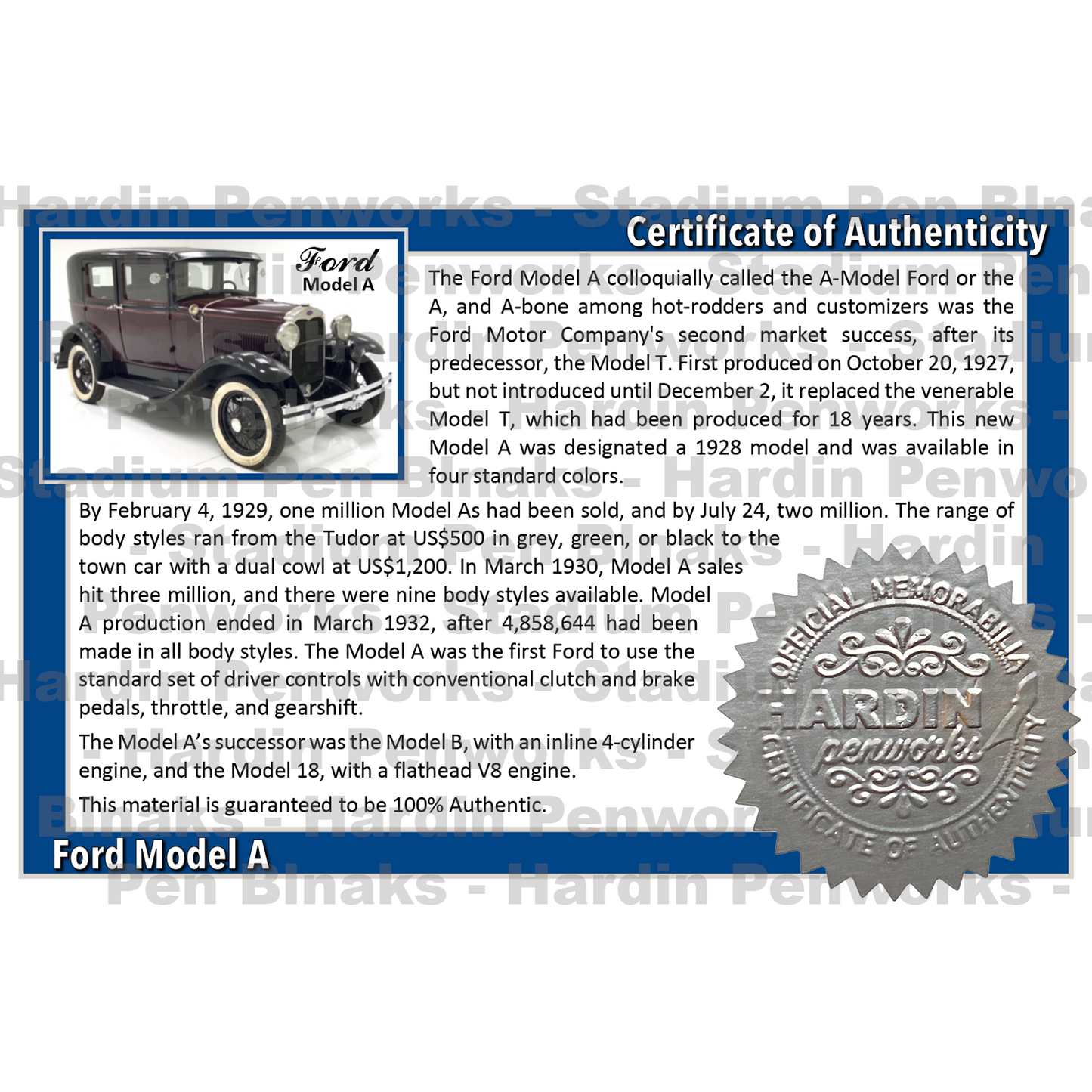
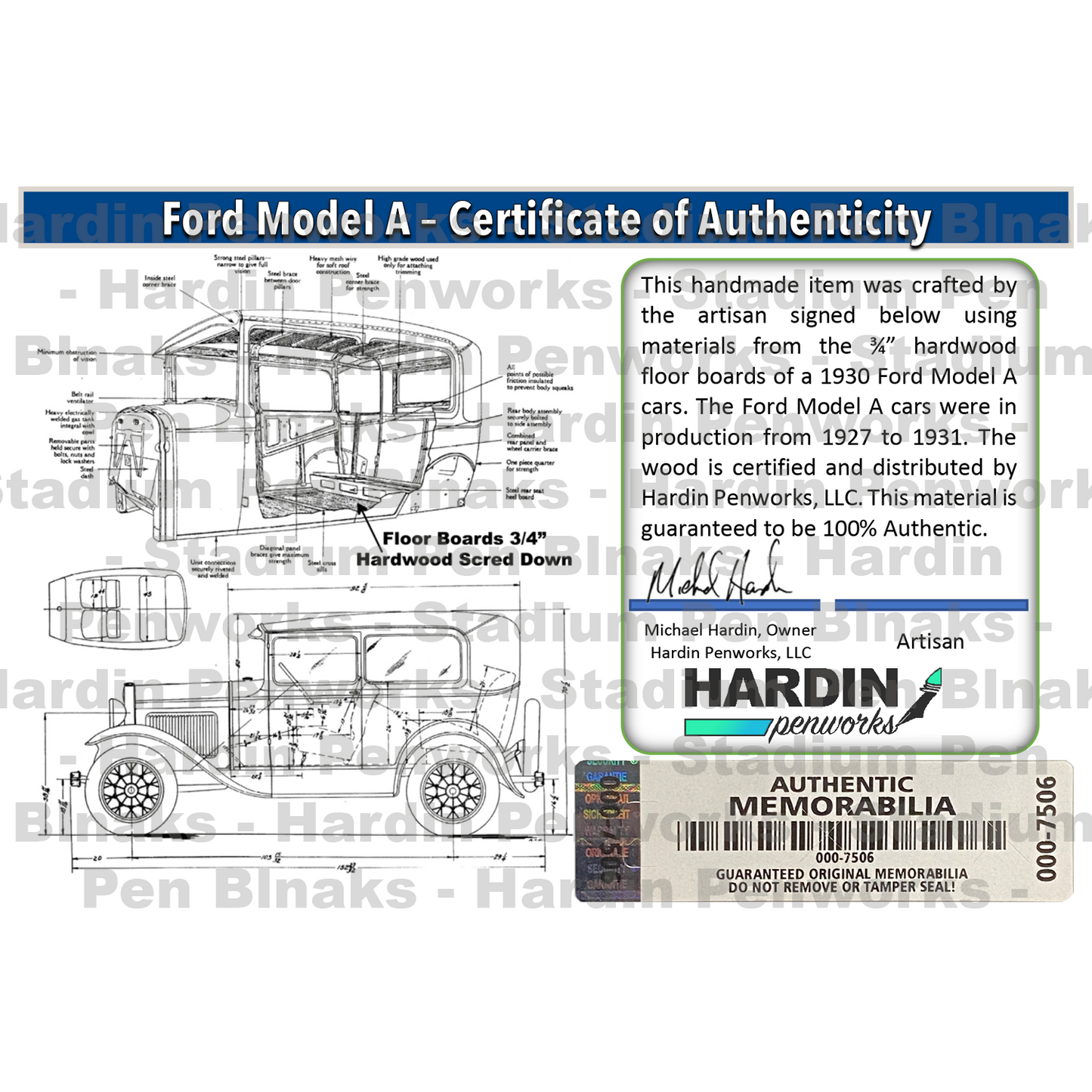
I bought this for my son. The Wood is pretty dry and chipped when I started. I used a very light hand with it. I had no problem turning it after. I would buy it again in a heartbeat. I used the gear pen from Penn State and they paired beautifully.
I understand this is old wood but it just did not hold up to turning. I tried using a lot of CA glue but it just wouldn’t hold up. It blew out on me twice after gluing trying to salvage what I can.
Thank you for your feedback—I truly appreciate you taking the time to share your experience. The plywood floorboard from the 1930s Ford Model A is indeed a unique and historic material, but as you noted, its age makes it more delicate to turn. That’s why we take the extra step of stabilizing the wood to enhance its workability. Even thought the wood is stabilized, the glue holding the plywood layers together can still fail. For best results, we recommend using very sharp tools—especially a properly sharpened skew—and a light touch to minimize stress on the material. While CA glue can help in some cases, excessive force or dull tools can lead to blowouts, especially with historic woods like this.
I’m sorry to hear this blank didn’t turn out as expected for you. If you’d like, feel free to reach out, and I’d be happy to offer additional tips or discuss a way to make it right. Your satisfaction is important to us!

